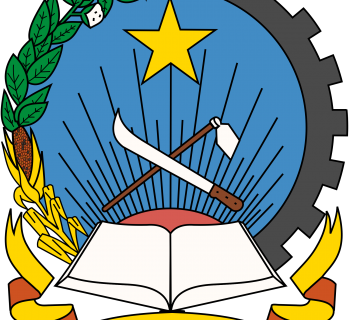Coat of arms of Trinidad and Tobago

More than fifty years ago, the island state, located in the southern part of the Caribbean, received its own official symbol, and began to slowly get out on an independent path of development. The coat of arms of Trinidad and Tobago pays tribute to European heraldic traditions, and on the other hand, clearly demonstrates its own mentality.
The composition is built according to the classical canons, but individual elements are depicted not stylized, but very realistic, detailed, with an abundance of details. The second feature of the coat of arms of this island state is the presence of three representatives of the bird world. At the same time, predatory animals, traditionally depicted on the main emblems of countries, were out of work..
Coat of arms with a vivid character
A distinctive feature of the main emblem of Trinidad and Tobago is a rich palette of colors used to draw individual details. This is especially true for the base, where a beautiful coastal landscape is painted, with different shades of blue and light used for the waves, and brown and green tones for the mainland..
The composition itself is close to the classic European coats of arms; the emblem of this island power contains:
- a shield divided into fields and decorated with elements;
- supporters in the form of birds;
- knight's helmet with a crest;
- steering wheel and palm tree, crowning the coat of arms;
- coastal landscape;
- state motto scroll.
In the best traditions of European heraldry, only the knight's helmet, windbreak and crest are made. Part of the armor of the medieval knight is painted with gold paint, the burette consists of scarlet and silver scrolls intertwined. The same colors are used for the crest..
The shield is divided into two parts, painted in the colors of the national flag of Trinidad and Tobago. In the lower part there is a flotilla consisting of three ships. Thus, the authors of the coat of arms wanted to thank Christopher Columbus, who opened the islands to Europe. The ships on the coat of arms correspond to the sailing ships of the brave Spanish navigator. Also on the shield are two hummingbirds, symbolizing the wealth of the bird world in the Caribbean.
Two more birds act as shield holders. The red ibis is the symbol of the island of Trinidad, located to the left of the shield. The red-tailed chachalaka, respectively, symbolizes the neighboring island of Tobago, supports the shield on the right side.


